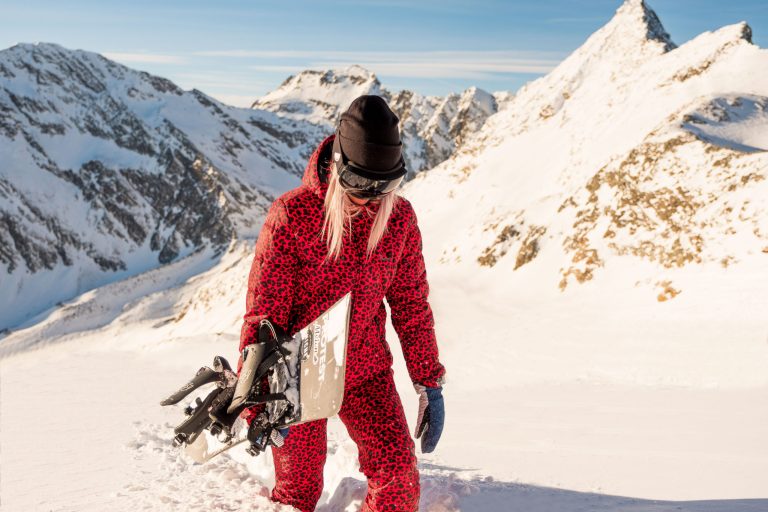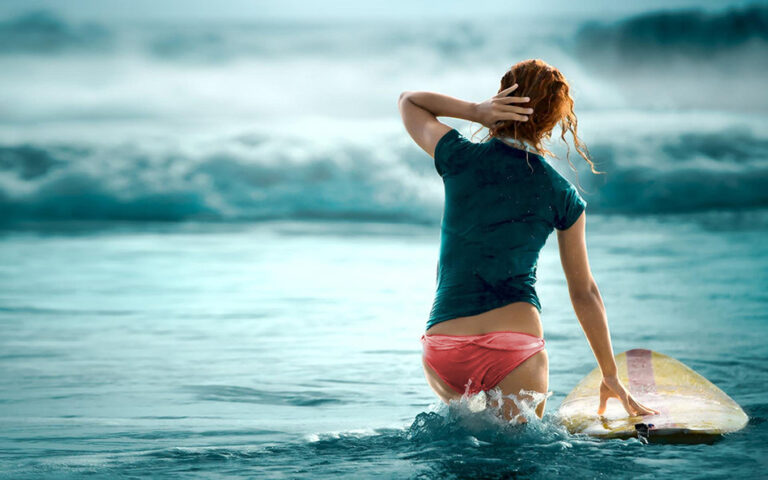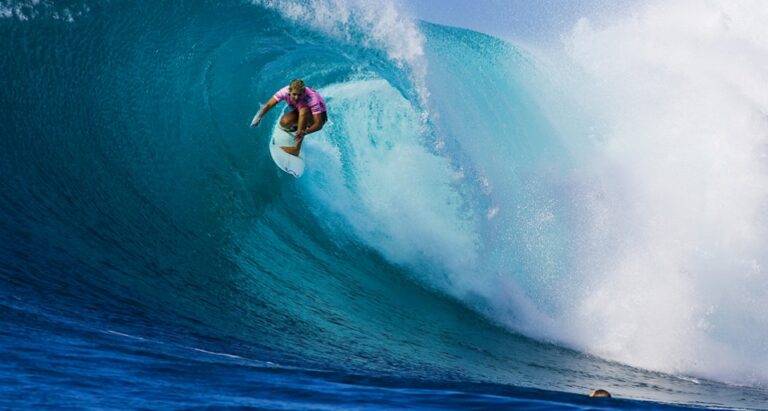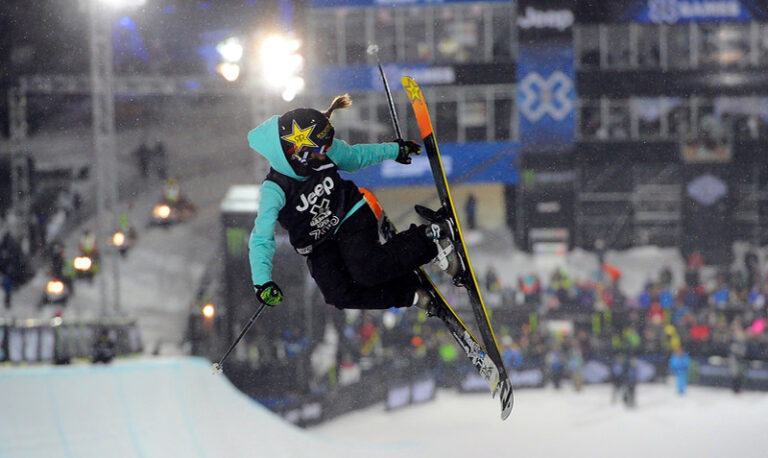Compiled by Jojo Cook and Jo Fairweather.
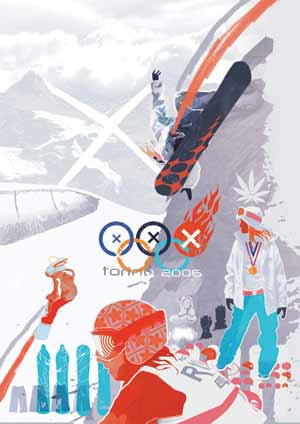
When snowboarding made its debut at the 1998 Winter Olympics in Nagano, Japan it was surrounded by controversy and strife.
Snowboarders had hardly been queuing up at the International Olympic Committee’s door (unlike curlers, who petitioned to get their sport in). But, recognised as the world’s fastest growing sport, snowboarding was invited, leaving the riders divided as to whether it would be good for their sport.
Things stepped up a notch when legendary Norwegian snowboarder Terje Haakonsen announced he would be boycotting the games because of the IOC’s decision to appoint the International Ski Federation (FIS), rather than the International Snowboard Federation(ISF) to oversee. The snowboarding community was split over the debate, and Terje’s sponsors, Burton, backed him up.
Then, as the games got underway, the real controversy struck. Canadian gold medallist Ross Rebagliati was stripped of his half pipe gold after traces of marijuana were found in his blood. Rebagliati won his appeal when he argued successfully that the drug traces came from second-hand smoke – marijuana used by his friends at a going-away party in Whistler. After intense negotiation between the IOC and FIS, Rebagliati was awarded his gold medal back.
About 7,500 spectators can watch the whole course and 650 judges and referees will participate in the Games.
As contentious a beginning it was (it certainly wouldn’t have happened in curling), snowboarding certainly made its mark on the Olympics. As next February’s winter games approach, riders still sit on either side of the Olympic fence. But one thing is certain – we are set to see the highest competitive standards yet, particularly among the women.
The three disciplines (half pipe, slalom and, for the first time, boarder cross) will be broadcast on prime time TV all over the world. Behind the scenes, there will be lots of action too – come take a look…
Goddesses of the Games
In the ancient Games, women were forbidden from taking part or even entering as spectators, upon punishment of death! So they created their own Games dedicated to the goddess Hera, the sister-wife of Zeus (the ancient Olympics were dedicated to Zeus). The only sport in it was a 158 metre ‘foot race’, as it was then called.
When the Games were re-introduced in 1896, even the founder did not agree with women’s participation, an issue that remained hotly debated until the 1900 Games in Paris when women were finally allowed to enter tennis and golf.
Crowds & Condoms
- • The Olympic motto is ‘Citius, Altius, Fortius’, Latin for ‘faster, braver, stronger’, but universally accepted to mean ‘swifter, higher, stronger’.
- • A total of 84 medals will be given out.
- • Olympians are a randy lot. In Albertville the condom machines were re-filled every two hours whilst in Salt Lake City the athletes got through 250,000. Compared to the 90,000 used at the summer games in Sydney, it seems winter athletes have more need to, er, warm up. Swimmers are reportedly the most toned and horny, while the French are apparently the most promiscuous, although they only do it among themselves.
- • Some 2,500 athletes and 2,500 officials from 85 national Olympic Committees will be housed in three Olympic Villages, Torino, Bardonecchia and Sestriere.
- • More than 10,000 journalists and media are expected to attend.
- • The Olympic Rings were designed in 1913 to symbolise the five continents. They are regarded as the most potent of all global marketing symbols above McDonalds, Shell, The Red Cross and Mercedes.
- • The newly built Olympic halfpipe in Bardonecchia was first used in the World Snowboard Cup 2004 when Gretchen Bleiler took first place.
Winning Fitness
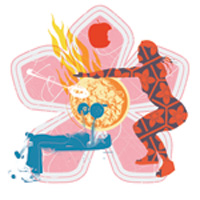
Reaching optimum Olympic fitness takes time and discipline. Brit hopes, Zoe Gillings and Kate Foster, both adopt a daily cardiovascular routine of running, cycling and swimming, topped up with weights, core training and plyometrics.
‘I go to the gym for an hour and a half every day,’ says Kate Foster. ‘I do upper and lower body weights, go home and then jog for around 5kms through forest and hills. Core training is important too as it helps with your rotations in the halfpipe.’
Core training and plyometrics are still a fairly new introduction to high level fitness but are important tools in honing the most powerful body possible. Core training works the deep ‘core’ muscles that wrap around your trunk like a muscular corset. This is especially important for pulling off rotations and spins. Plyometrics concentrates on explosive jumps and acts to improve speed, strength and stamina. The idea behind it is that it allows the athlete to exert the highest possible force in the shortest possible time and each exercise can be adapted to mimic the sport in question. For example, when trying to get fit for the coming season a good exercise would be to stand on some soft grass with your feet together and place a cereal box (nothing too big or heavy) to your side. Bend you legs and jump over the box, trying to keep your feet together at all time. Do 10 each way. Eventually you should find that the more you practise, the more powerful and stable your ollies will become.
‘Key training exercises tend to be very specific to both the discipline and each individual athlete,’ says Church. ‘For snowboarders, squat movement patterns are important, both single and double leg, which are good for both stability and strength on the board.’
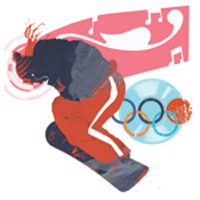
In Boarder Cross, the upper body gets worked a lot, so exercises like bench presses, shoulder and tricep dips will specifically help riders get out of the gate quickly.
‘Core training is important,’ adds Church. ‘They need to work on their abdominal and lower back strength.’
What about the all-important warm up before the race? ‘Generally speaking athletes will focus on the quads, hamstrings, lots of rotational stuff around the torso and neck, control in the pelvis and abdominal region and neck mobility too.’
Most athletes will start their warm up with physical preparation then switch to mental, taking around 30 minutes, aiming to get their body and mind in perfect form to compete.
‘The aim is to get as fast and reactive as possible,’ explains Church. ‘It’s a very different warm up to one you would do in the gym. It starts off very controlled then gets highly dynamic. The race is only very short but it’s very explosive so the riders have to be as focused as possible. They need to be in what we call a “not too heightened state” – as calm as possible and ready to go.’
Gold Medal Nutrition
If you’re going to go for gold, you need to fuel up on the right stuff. Snowboarders aren’t exactly known for their pre-competition nosh (you only have to head into a bar the night before a big contest and you’ll see that the only carbo-loading many athletes do is of the liquid variety), but once you hit Olympic level it pays to take nutrition notes.
“The pre-Olympic breakfast depends on the athlete, but ultimately before the race they need something high in carbohydrates for energy and some form of protein for recovery,’ says Marques Church, team strength and conditioning coach at the English Institute of Sport.
‘The parties will all happen in Turin, including the opening and closing ceremonies.’
‘For example, cereal, fruits and toast, for the carbohydrate, with milk, yoghurt and eggs for the protein. It should also be relatively low in fat because you won’t use a lot of that in racing. Some athletes have certain things they eat on race day which may not be nutritionally perfect, but they feel it will help them – superstition then comes into it as well.’
Complex carbs such as whole grains, pasta and vegetables are a good option, because they are absorbed slowly and release energy throughout the day, unlike the temporary sugar boost of simple carbs like fruit and sweets. Carbohydrates should make up the bulk of an athlete’s diet, while proteins are vital for the growth and repair of body tissues and are found in fish, meat and eggs. Some fats are also needed to encourage cell repair.
For Zoe Gillings, UK boarder cross champ, nutrition is a vital part of her training. ‘For breakfast I’ll eat a bowl of cereal, two pieces of fruit and a boiled egg. ‘Then I’ll probably have a baked potato and tuna for lunch and pasta for dinner, like spaghetti bolognaise.’ ’
Where to Watch, Party and Shop
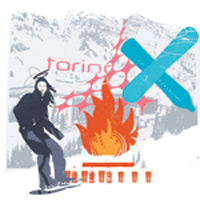
Where: The three Olympic villages will be in Turin, Bardonecchia and Sestriere but the snowboard events will take place in Bardonecchia, 90kms from Turin, near the French border on the Italian side of Frejus. The nearest airports are Turin and Milan.
Your best bet is to stay in Turin as there is very little accommodation in the resorts where the events take place. The parties all happen in Turin too, including opening and closing ceremonies (February 10 and 26 respectively) at Torino Olympic Palasport in the Stadio Comunale Area.
When: The opening ceremony takes place February 10, with snowboarding held on 11-12 February.
On the hill: With 140kms of trails, mostly on intermediate blue and red pistes, the Milky Way ski are is the largest ski area in Italy. Buy the Milky Way ski pass, which links several resorts, including Sauze D’Oulx and Montgeneve in France. But, be warned, Italians don’t like snowboarders riding off piste.
Off the hill: All the 30 hotels in the area have been assigned to the organising committee of the games, so try looking online for B&Bs, private appartments and hostels in the surrounding areas and in Turin itself.
Shopping: Bardonecchia has been gearing up for an influx of snowboard fans and is even transforming shops into ‘snowboard lifestyle stores.’ For high class luxury, designer names and fur check out Turin’s designer boutiques and furs. Europe’s biggest open air market is held daily at Piazza del Republica in Turin.
Partying: Try the Filanda restaurant in Turin for excellent hospitality and pizzas made before you or Momo is good, a 10 minute walk away so maybe less busy. Bar Torino is the local hang out, good for tourist into and hanging out with ski guides or find the Nouva Trau, which is more lively than it looks.
Useful contacts: Tickets for the winter Olympics are available from www.torino2006.ticketone.it.
Bardonecchia Tourist Office: + 39 (0)122 99 137
www.montagnedoc.it
www.turismotorino.org
www.torino2006.org
www.fis-ski.com
Pipe Music
In the halfpipe, each rider is allowed to choose two ‘signature’ tracks for their halfpipe runs.
In Salt Lake City British rider Lesley McKenna chose Pump Up The Jam by Technotronic and Groove is in the Heart by Deee-Lite, while Norwegian Kjersti Buaas chose Last Night by the Strokes. Winner Kelly Clark dropped in to Welcome to the jungle by Guns n’ Roses. In Nagano 1998, Canadian Maelle Ricker who took fourth place controversially chose Fool’s Gold by the Stone Roses.
The girls to watch

Dorian Vidal FRA, 29
Discipline: Halfpipe
The 2006 games in Turin will be Dorian’s second winter Olympics. In 2002 Dorian won the silver medal in the pipe. With lots of experience in high profile comps, she is Europe’s hottest contender and as this is her last Olympic opportunity, she’s hungry for it.
They say: ‘Dorian is tough, and I don’t mean girl tough. She kicks sand in the faces of most boys who choose to ride the pipe in her presence. She’s got the pop and the style to make it go bang,’ Danny Burrows, editor-in-chief at Onboard magazine.

Kate Foster GB, 20
Discipline: Halfpipe
Best achievement: ‘Winning my first Europa cup with the Brits, standing on the podium with a black eye, scratched up swollen nose and cut up lip after a face plant into the bottom of an icy pipe!’

Silvia Mittermuller GER, 22
Discipline: Halfpipe
Silvia is one of these technical riders who is simply good at everything, whether it be rails, half pipe or the big air. With a trick arsenal that includes 7’s, Switch reputedly now 9’s, it’s no wonder that she was invited to X Games.
Achievements: Vice junior world cup champion 2003, 4th Van Triple Crown 04 and 6th US Open 04.

Zoe Gillings GB, 20
Discipline:Boarder Cross
It’s been an amazing year for Zoe. In September 2004 she won her first world cup in Chile and at the end of the 2005 season she was placed 4th in the world at Boarder Cross.
My fears: ‘I’m worried that everyone is going to expect me to do well when due to the nature of snowboard cross you never know.’

Gretchen Bleiler US, 24
Discipline: Halfpipe
The leader in the world cup standings after winning the X Games and the 2004 women’s world half pipe (held in the Olympic pipe). She regularly throws cripplers and 720s – a very strong contender with her sights set on gold.
She says: ‘I know the town, I know the halfpipe and I have a good feeling for both.’

Lesley McKenna GB, 31
Discipline: Halfpipe
Lesley has been on the world cup circuit since 1998 and has had endless top five results since. She was the only Brit to compete in the 2002 winter Olympics in Salt Lake City and has been ranked amongst the top 5 in the world.

Sophie Rodriguez FRA,17
Discipline: Halfpipe/Boarder Cross
Until recently Sophie was only old enough to enter the junior competitions, but man, what a finale. In April 2005 Sophie became double junior world cup champion in both the boardercross and the halfpipe. Now a veteran, the ladies better watch out!

Cheryl Maas NED, 20
Discipline: Halfpipe
In 2005 alone she has notched up some envious contest results, including 2nd at the Candy Jam in Sweden, 6th at the Roxy Chicken Jam in Switzerland and 1st in the straight air session at the Artic Challenge.
They say: ‘She’s the crazy one.She can kick anyone’s ass and is probably the biggest raw talent of the bunch,’ Youri Barneoud, senior editor, Onboard.

Kelly Clarke US , 21
Discipline: Halfpipe
Has won just about everything, including gold at the 2002 Olympic halfpipe in Salt Lake but came second to Gretchen in the Bardonecchia halfpipe at the world cup in 2004.
She says: ‘It was the most amazing, most breathtaking, indescribable moment of my life’ – on winning halfpipe Olympic gold in 2002.

Kjersti Oestgaard Buaas NOR, 23
Discipline: Halfpipe
Hailing from Trondheim, Norway, Kjersti is notoriously fearless and die-hard in the pipe. She just missed out on a medal in the 2002 Winter Olympics At Park City, with 4th place and won third place in the Vans Triple Crown in 2004.
She says: ‘I think the Olympics are great. Everything is set up really well for all the competitors and the conditions are always their best during the games! ‘
Headshots: Dorian Vidal by Nicolas Joly; Cheryl Maas by Josie Clyde; Kelly Clarke credit Burton snowboards
Past winners
2002 winners – Salt Lake City, USA
Women’s Half Pipe:
- Gold – Kelly Clark (US)
- Silver – Doriane Vidal (France)
- Bronze – Fabienne Reuteler (Swiss)
Women’s Parallel Giant Slalom:
- Gold – Isabelle Blanc (France)
- Silver – Karine Ruby (France)
- Bronze – Lidia Trettel (Italy)
1998 winners – Nagano, Japan
Women’s Half pipe:
- Gold – Nicola Thost (Germany)
- Silver – Stine Brun Kjeldaas (Norway)
- Bronze – Shannon Dunn (US)
Women’s Parallel Giant Slalom:
- Gold – Karine Ruby (France)
- Silver – Heidi Renoth (Germany)
- Bronze – Brigitte Koeck (Austria)

